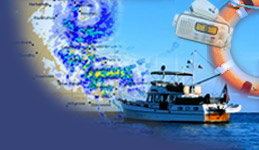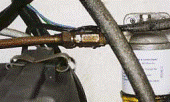Plan Refueling or Fuel Transfer Operation | Fuel Tanks, Fuel Lines and Connections |
Fuel Tanks
Fuel tanks are usually constructed of fiberglass, stainless steel or aluminium sheet metal. Fuel tanks are designed without any openings in the bottom, sides or ends. Filling and venting connections are on the top. However, diesel tanks may have a lower pocket to test for the presence of water in fuel.
A fuel tank has connections for filling, venting, suction line, sender for tank gauge, ground connection and a manhole with cover. The suction line and the return line should be separated.
The filler fitting should be installed such that overfilling and fuel entering air intakes is avoided. A shut-off valve is installed in the suction line as close to the tank as possible.
The valve can be closed from a position outside the compartment in which the tank is situated.
In case of a fire in the engine room, the fuel can be cut off without entering the compartment.
|
|
Fuel LinesAnnealed copper of marine standard. They should be firmly secured to the hull in an always visible and accessible position. Fuel lines should be regularly checked for weeps. |
FiltersOne or more filters (primary and secondary) are fitted in the fuel line depending on the engine design. Filters allow water to be bled off and removal of other contaminants. If possible, do not fill the main and auxiliary fuel tanks from the same pump – in case the fuel is contaminated. If a filter becomes blocked or damaged and cannot be cleaned or replaced in an emergency, it can be by-passed. |
 |
| back to top |


